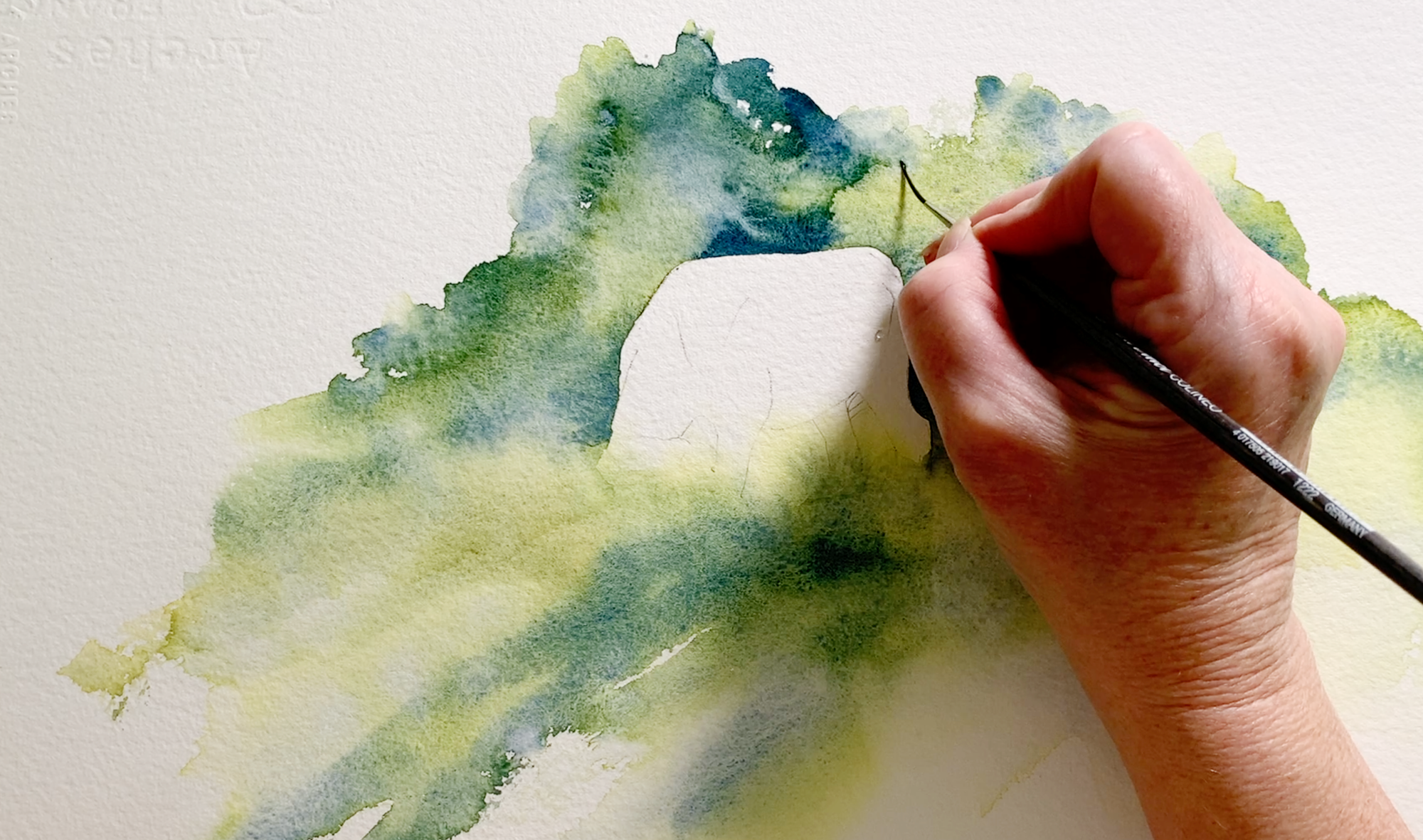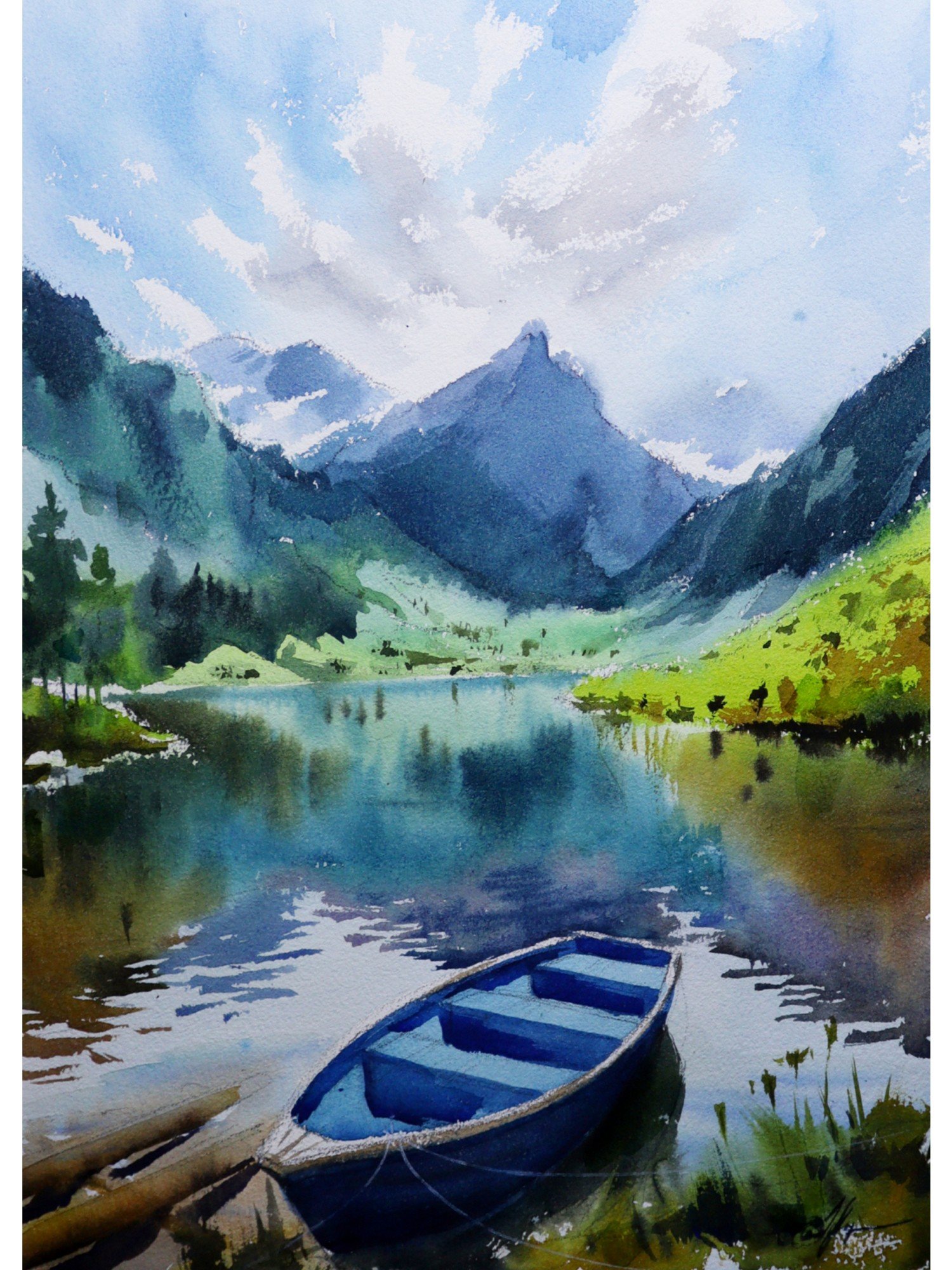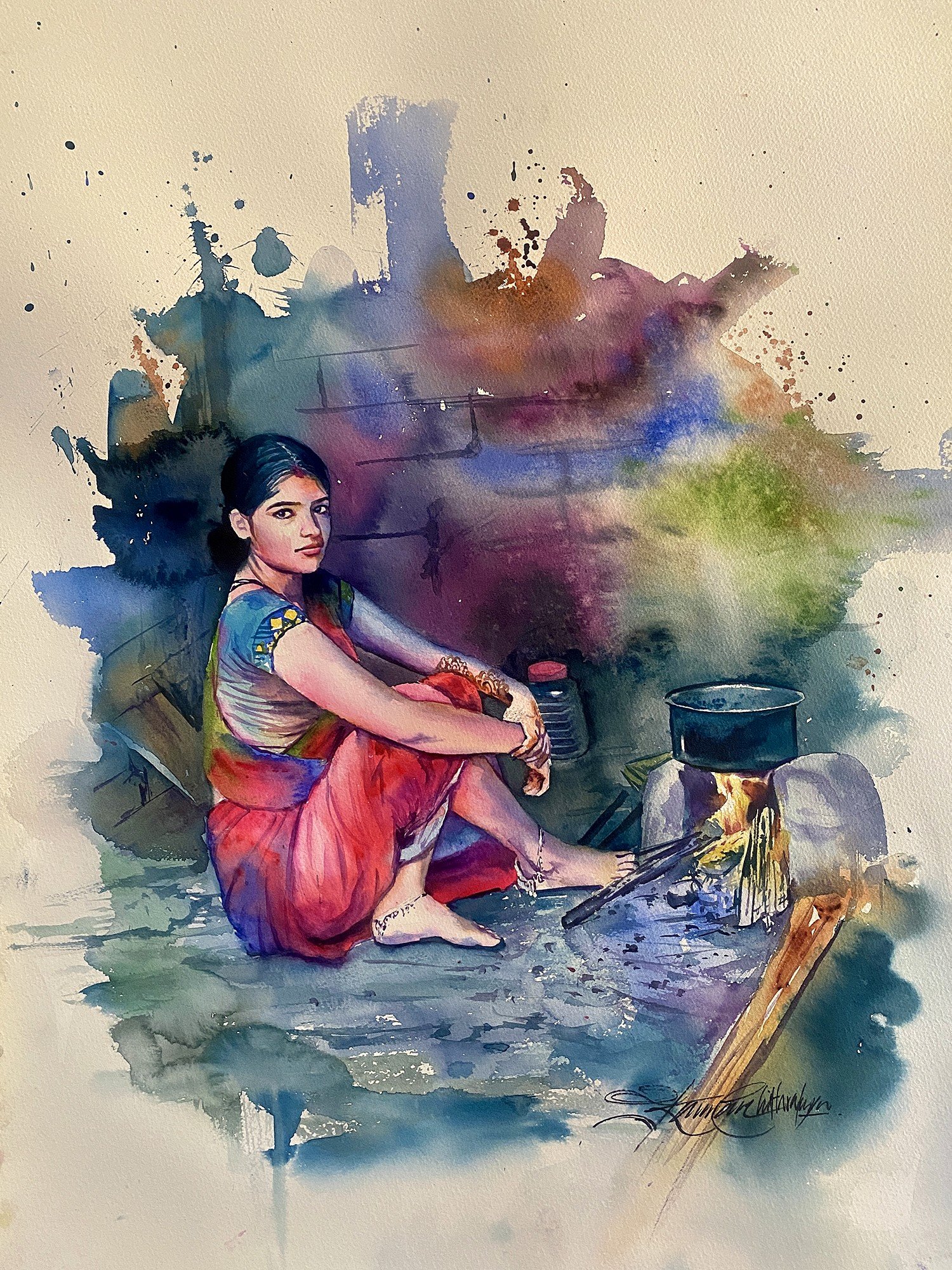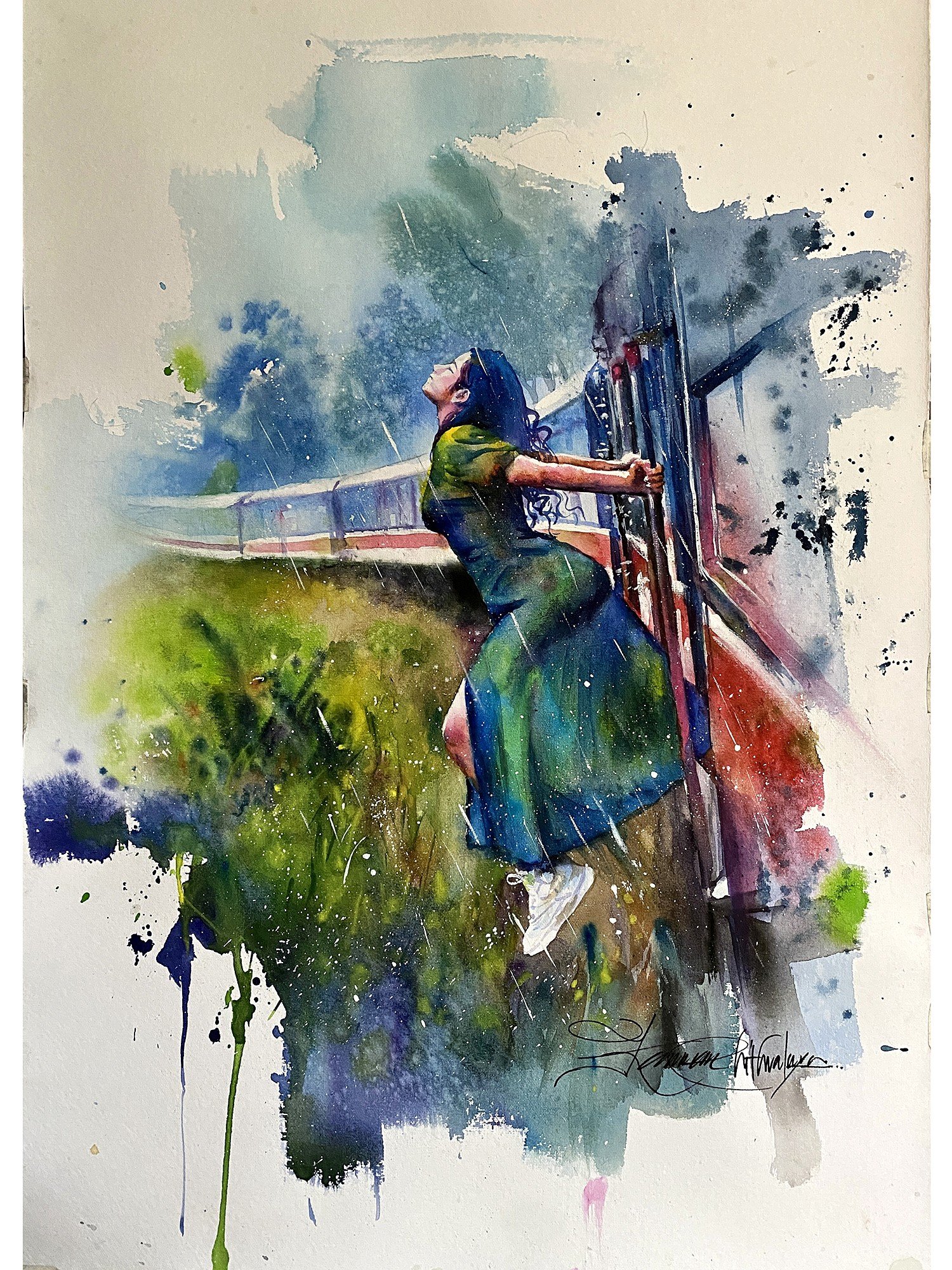I. Introduction: A Journey through Fluidity and Transparency
Watercolor painting, an art form steeped in history and brimming with expressive potential, offers artists a unique opportunity to explore the interplay of color, light, and fluidity. This medium’s translucent nature, combined with its ability to evoke a sense of spontaneity and ethereality, sets it apart from other painting techniques and invites both novices and seasoned artists to embark on a journey of creative discovery. The following discourse aims to delve into the beauty and freedom inherent in watercolor painting, providing insights into its technical aspects, artistic versatility, and the profound emotional connections it fosters.

II. A Historical Perspective: From Ancient Artifacts to Modern Masterpieces
The roots of watercolor painting can be traced back to ancient civilizations where pigments were mixed with water to create vibrant murals and illuminated manuscripts. Over time, watercolor evolved into a distinct art form, flourishing during the Renaissance as a means for sketching and capturing preliminary ideas. It wasn’t until the 18th and 19th centuries that watercolor gained recognition as a standalone medium, thanks to the works of artists like J.M.W. Turner and John Constable, who showcased its capacity for capturing the fleeting effects of light and atmosphere. Today, watercolor continues to captivate artists worldwide, with contemporary practitioners pushing the boundaries of the medium through innovative techniques and conceptual explorations.
III. The Unique Characteristics of Watercolor: Embracing Translucency and Fluidity
At the heart of watercolor’s allure lies its transparency, allowing colors to blend harmoniously on the paper without losing their vibrancy. This quality enables artists to create luminous washes, subtle gradations, and delicate veils of color that seem to glow from within. Furthermore, watercolor’s fluid nature encourages spontaneity and responsiveness, as the paint flows and reacts to the surface, the brushstrokes, and even the ambient humidity. These inherent characteristics not only contribute to the medium’s visual appeal but also foster a sense of freedom and unpredictability that many artists find exhilarating.

IV. Techniques and Tools: Harnessing the Power of Watercolor
Mastering watercolor requires a deep understanding of the medium’s behavior and the judicious use of techniques such as wet-on-wet, wet-on-dry, glazing, and layering. Each method allows artists to achieve different effects, from soft, dreamy blends to crisp, controlled lines. Additionally, selecting the right tools – high-quality paints, brushes of various sizes and shapes, absorbent paper, and a reliable water source – is crucial for unlocking watercolor’s full potential. By experimenting with techniques and tools, artists can develop a personal style that harnesses the medium’s fluidity while maintaining control over their artistic vision.
V. Color Theory and Watercolor: A Symphony of Hues
In watercolor, color theory takes on a new dimension due to the medium’s transparency. Artists must consider the interactions between pigments, the impact of dilution, and the role of the white paper in creating the illusion of depth and light. Understanding color harmony, contrast, and temperature, as well as learning to mix colors effectively, enables artists to create rich, nuanced paintings that sing with vitality. Moreover, watercolor’s ability to capture the delicate nuances of natural light makes it an ideal medium for landscape and plein air painting, where capturing the ever-changing hues of the environment is paramount.

VI. The Emotional Resonance of Watercolor: Expressing Intimacy and Vulnerability
Beyond its technical aspects, watercolor has a unique ability to evoke emotions and convey a sense of intimacy and vulnerability. The fluidity of the medium often mirrors the ebb and flow of human emotions, while its translucency can suggest a delicate fragility. Many artists find watercolor particularly suited for expressing personal narratives, introspective themes, or abstract concepts, as the medium seems to invite viewers to peer beneath the surface and engage with the underlying emotions. This emotional resonance is further enhanced by the medium’s tendency to resist overworking, encouraging artists to embrace imperfection and find beauty in the incomplete or unresolved.
VII. Watercolor in Various Genres: Demonstrating Versatility and Adaptability
From realistic portraiture to abstract expressionism, watercolor proves its versatility across a broad range of artistic genres. Its ability to render fine details with precision makes it suitable for botanical illustrations and architectural renderings, while its fluidity and spontaneity lend themselves perfectly to impressionistic landscapes and gestural abstracts. Moreover, watercolor can be combined with other media, such as ink, gouache, or collage elements, to create mixed-media works that push the boundaries of traditional watercolor painting. This adaptability ensures that artists can continually evolve their practice, exploring new styles and subjects while staying true to the essence of the medium.

VIII. The Joy of Learning and Practicing Watercolor: Nurturing Creativity and Mindfulness
For many artists, the process of learning and practicing watercolor becomes a meditative and therapeutic experience. The medium’s emphasis on observation, patience, and acceptance of imperfection fosters mindfulness and a deeper connection with the world around us. Moreover, the joy of watching colors bloom and merge on the paper, the satisfaction of mastering a challenging technique, and the thrill of creating something beautiful and ephemeral all contribute to the enduring appeal of watercolor painting. Whether pursued as a hobby or a professional endeavor, watercolor offers a fulfilling creative outlet that nourishes the soul and enriches one’s life.
IX. Watercolor in the Digital Age: Bridging Traditional and Contemporary Art Practices
In the digital age, watercolor has found new life through the integration of technology. Artists can now use digital software to simulate watercolor effects, experiment with color combinations, and even create entirely digital watercolor paintings. Additionally, online platforms provide opportunities for artists to share their work, connect with fellow enthusiasts, and access a wealth of tutorials and resources. While some may argue that these advancements detract from the tactile and immersive nature of traditional watercolor, others see them as valuable tools for expanding the reach and accessibility of the medium, bridging the gap between the old and the new.

X. Conclusion: Embrace the Beauty and Freedom of Watercolor Painting
In conclusion, watercolor painting is a captivating and liberating medium that invites artists to dive into a world of fluidity, transparency, and boundless creativity. Its unique characteristics, versatile techniques, and emotional resonance make it a timeless art form that continues to inspire and challenge artists across generations. Whether you are a beginner eager to explore the wonders of watercolor or an experienced painter seeking to deepen your connection with this enchanting medium, the journey ahead promises a rich tapestry of discovery, growth, and self-expression. So, embrace the beauty and freedom of watercolor painting, and let the dance of pigment and water guide you on a transformative artistic adventure.








